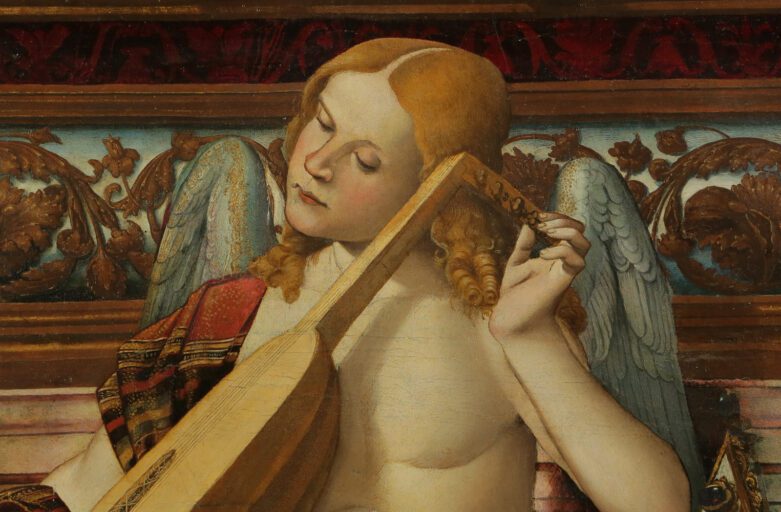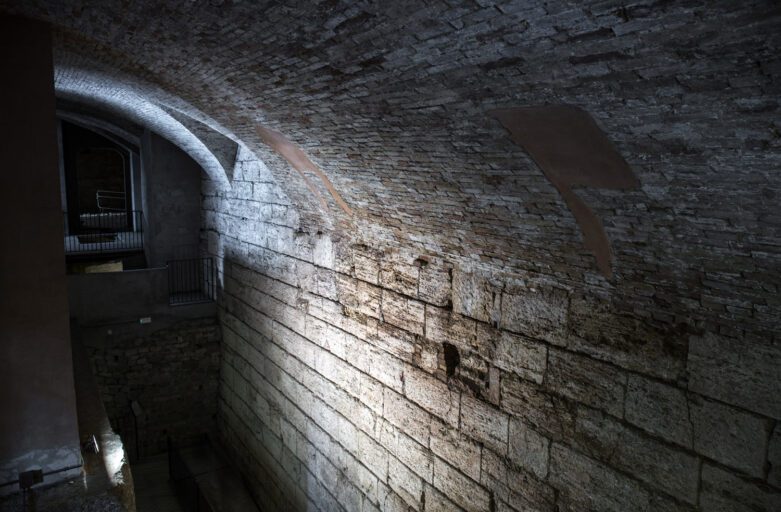Perugia and Its Etruscan Walls
Perugia was one of the main Etruscan towns. Its external walls, dating back to the third century BC (with some older, fourth century parts), still witness the importance the town had acquired. The whole perimeter is some three kilometers (1.5 miles) long; many sections remain visible, while others have been incorporated within later buildings. The Etruscan walls follow the ups and downs of the soil. In the lower areas they fold inwards, so that the overall shape recalls a clover
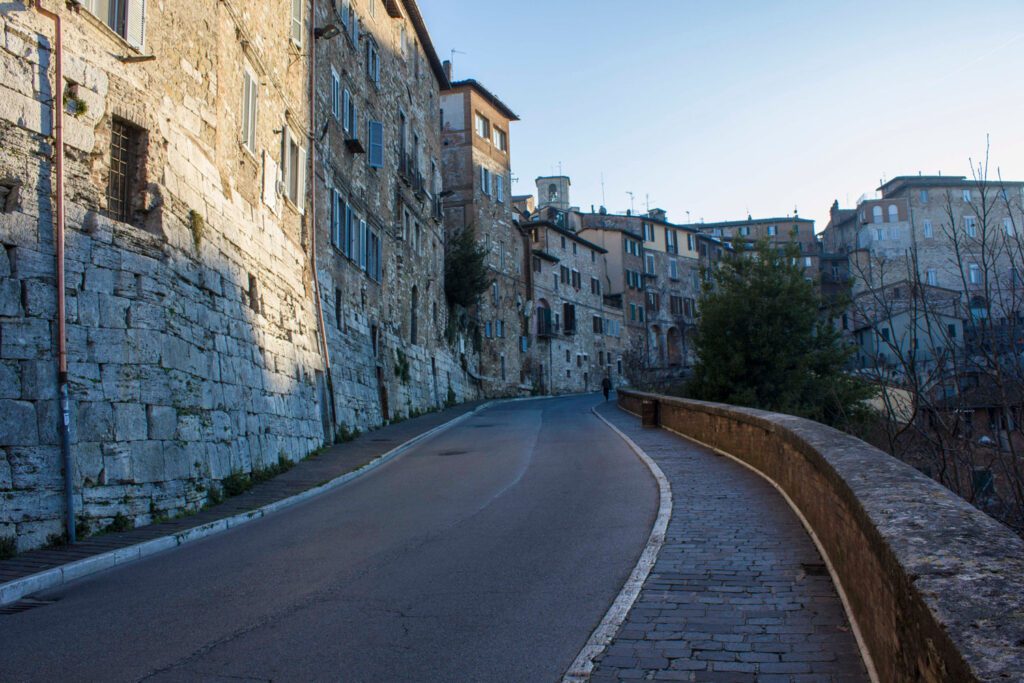
The Town Wall Planning
In correspondence to the roads leading to/from it, six major gates connected Perugia with other towns in the land, like Gubbio, Rome, Orvieto, Chiusi, and Cortona. There also existed minor gates, called postierle in Italian, used by pedestrians, or in order to let the waste waters flow away.
The ancient town planning implied two main directions. The North-South one – called cardo in Latin – basically followed a straight line, and linked the two main gates, that is, the Etruscan Arch and Porta Marzia. The East-West one, called decumanus, linked respectively Arco dei Gigli (Ach of the Lilies) and Porta Trasimena (the gate toward Lake Trasimeno).
The town walls were built by using travertine blocks shaped like squares or trapezoids, in rows superimposed to one another without any mortar. We can still nowadays recognize letters of the Etruscan alphabet on the blocks: the “quarry marks,” that indicated to which building sites in Perugia the blocks were being supplied. The source quarry was located in Santa Sabina, a place some 10 kilometers (5 miles) off downtown.
The town walls already existed in the fourth century BC: historical sources in fact report that in 310 BC the army of Consul Fabius Maximus Rullianus, in his military campaign against Etruscans, was halted in Perugia precisely thanks to its defensive walls
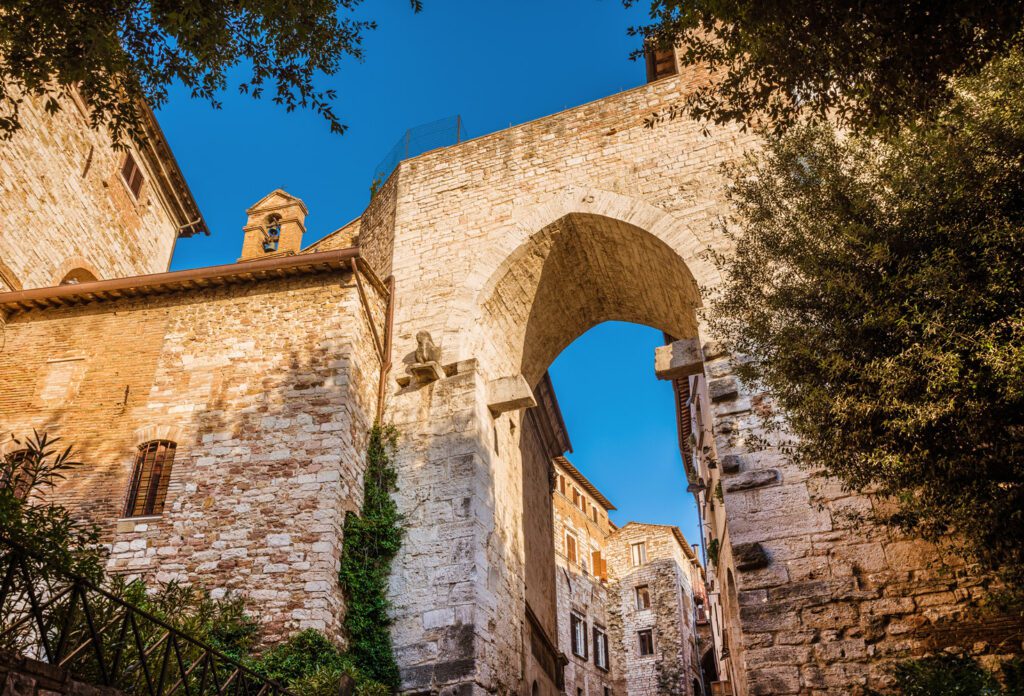
Etruscan Arch, the “Beautiful Gate”
On the North side of the walls, where the Via Amerina (the road to Amelia) left the town, there rises the Etruscan Arch. It was called porta pulchra, “the Beautiful Gate,” already in the Middle Ages because of its imposing and refined architecture. Unlike the wall perimeter, both the Etruscan Arch and porta Marzia, were rebuilt in the mid-third century BC, probably in correspondence to the Via Amerina being extended to Perugia itself.
The Etruscan Arch is sided by two trapezoidal towers, protruding from the walls and some 20 meters (60 feet) high. The arch span is not in line with the walls, but slightly oblique; above it, a frame is surmounted by shield-shaped circles, alternating with half pilasters with Ionic capitals. In the Middle Ages, the shield motif would be copied for Palazzo dei Priori (Palace of Priors). The arch above the main opening (currently filled in with bricks) is believed to have housed some war device when needed. In the area under the vault, wide, dark gray stains can be noticed: the marks left by the fire that devastated the town during the civil war in the first century BC, giving the victory to then young Octavian, who would become Emperor Augustus.
From the square in front of the Etruscan Arch, you can turn right and take Via Cesare Battisti, thus following the old wall perimeter, easy to spot thanks to its big blocks in travertine.
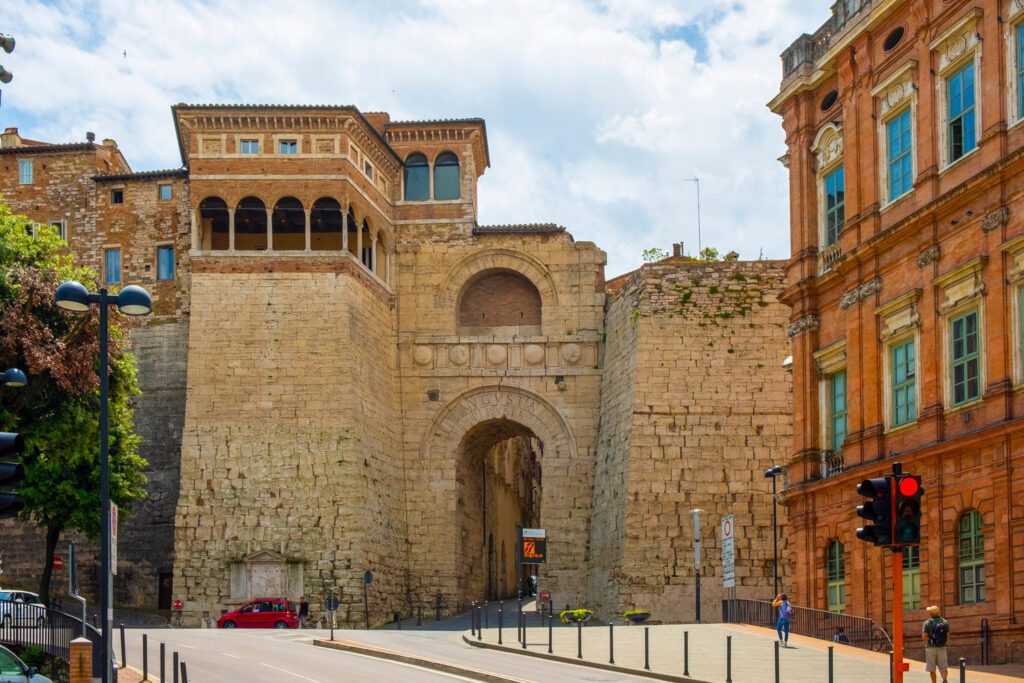
The “Conquerors” on the Etruscan Arch
On the main arch the Latin words AUGUSTA PERUSIA (“Perugia, owned/protected by Augustus”) are obviously carved. Fragments of the red pigment that filled the carving can still be seen. The inscription refers to the conquest of the town by the hand of Octavian (then Augustus) in the war that ended in 40 BC.
Below it, another inscription reads COLONIA VIBIA. It recalls the epoch in which Perugia was given the Roman status of “colony,” a partly autonomous town; that was during the short period (251-253 AD) when the Emperor was a man from Perugia, C. Vibio Treboniano Gallo.
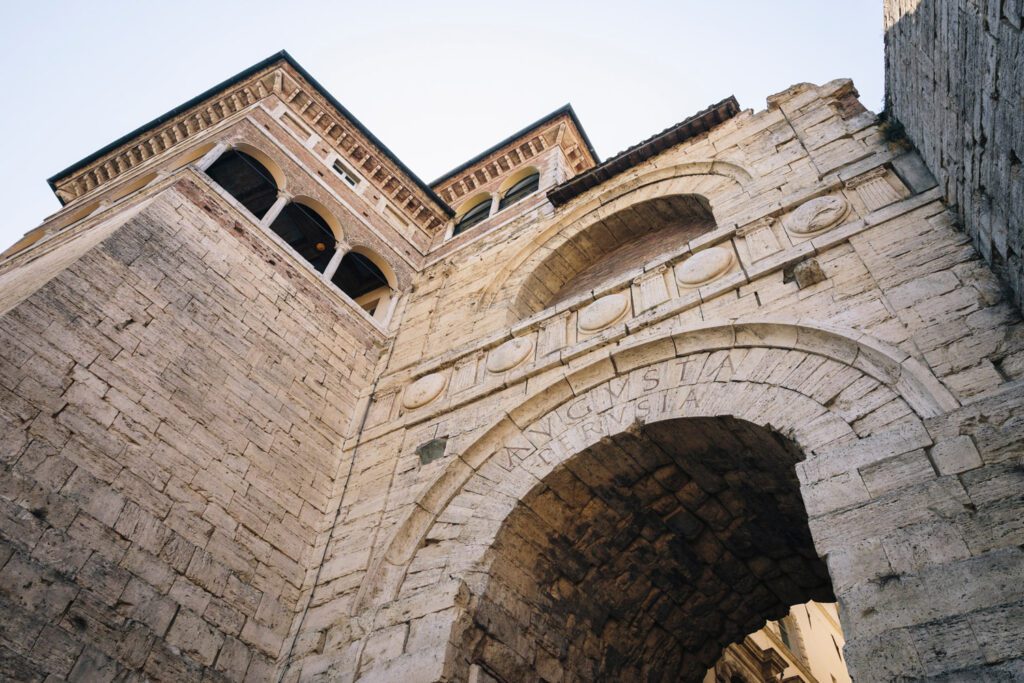
INFORMAZIONI
Località
Via Ulisse Rocchi, 39, 06123 Perugia PG
Contatti
info@secretumbria.it
